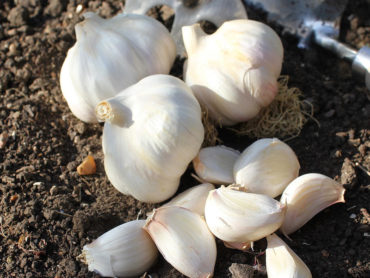If you have bought salad plants from Suttons, your young plants have been grown under ideal conditions and they will develop best if these directions are followed closely.
On arrival
Remove the plants from the box as soon as they arrive and check that the compost block is adequately moist, watering if necessary with tepid water. Leave them on a shaded windowsill or in a greenhouse for a few hours to settle before further handling, ensuring a frost-free non-draughty situation.
Potting On
Your salad plants should be potted on as soon as possible, but they will keep quite well for 2-3 days if necessary, provided they are kept in a warm light place and are not allowed to dry out. Using a 9 to 11cm pot for the tomatoes and cucumbers and a 5 to 7cm pot for the lettuce, pot the plants into a good quality potting compost. If the block of compost is surrounded by any woven material, this should not be removed as it is specially designed to allow the roots to penetrate through into the potting compost. Before planting make sure that the root ball is not dry, water well an hour or so beforehand, if necessary. Set the plants so that the top of the root ball is about 1cm (0.5″) below the compost surface.
Growing On
After potting, give a thorough watering, but thereafter take care to avoid over wet conditions, particularly as the young plants become re-established. Grow on in a light, humid position, and maintain an initial temperature of 16-18°C (60-65°F).
Ventilate when possible to improve air circulation and after the first week gradually lower the temperatures over the next couple of weeks to harden off the plants. By this time the roots should have filled the pots and as soon as any risk of frost has passed and night temperatures are regularly 5°C plus the plants are ready for planting into their final growing position.
Lettuce
Should there be more than one seedling in the plug pinch out the weakest. Plant out in a sunny or lightly shaded spot 23cm (9″) apart in each direction. Keep the plants well watered during dry spells.
Cucumber
Cucumbers can be very prolific if given the right growing conditions so a little extra effort at the planting stage will give bigger harvests throughout the summer. Select a planting position in a warm sunny spot and incorporate into the well drained soil, a good quantity of fertile organic matter such as well rotted manure or composted garden waste.
Although not essential it is highly recommended to cover an area up to 1 meter square with a black polythene sheet, through which small holes have been made to allow the rain water to pass through. The sheet will not only keep the competitive weeds down and protect the maturing fruit but also warm the soil around the roots of the plant.
Plant 30cm in from the diagonal corners by cutting a cross, slightly larger than the volume of the root ball and then planting, ensuring that the root ball is covered over with soil.
Tomatoes
Tomatoes will perform well in the garden if planted in a sunny, sheltered position after carefully hardening off and the risk of frost has passed. Space the plants 45cm (18″) apart and provide adequate support from an early stage tying in the main stem as the plants develop.
Side shoots, which appear where the leaf stalks join the stem, should be removed by pinching out when they are about 2.5cm (1″) long.Water well, particularly during dry spells and once the fruit starts to set apply a liquid tomato fertiliser.In the autumn, as the weather turns cooler, container grown plants may be moved into the greenhouse or conservatory to extend the fruiting period.





